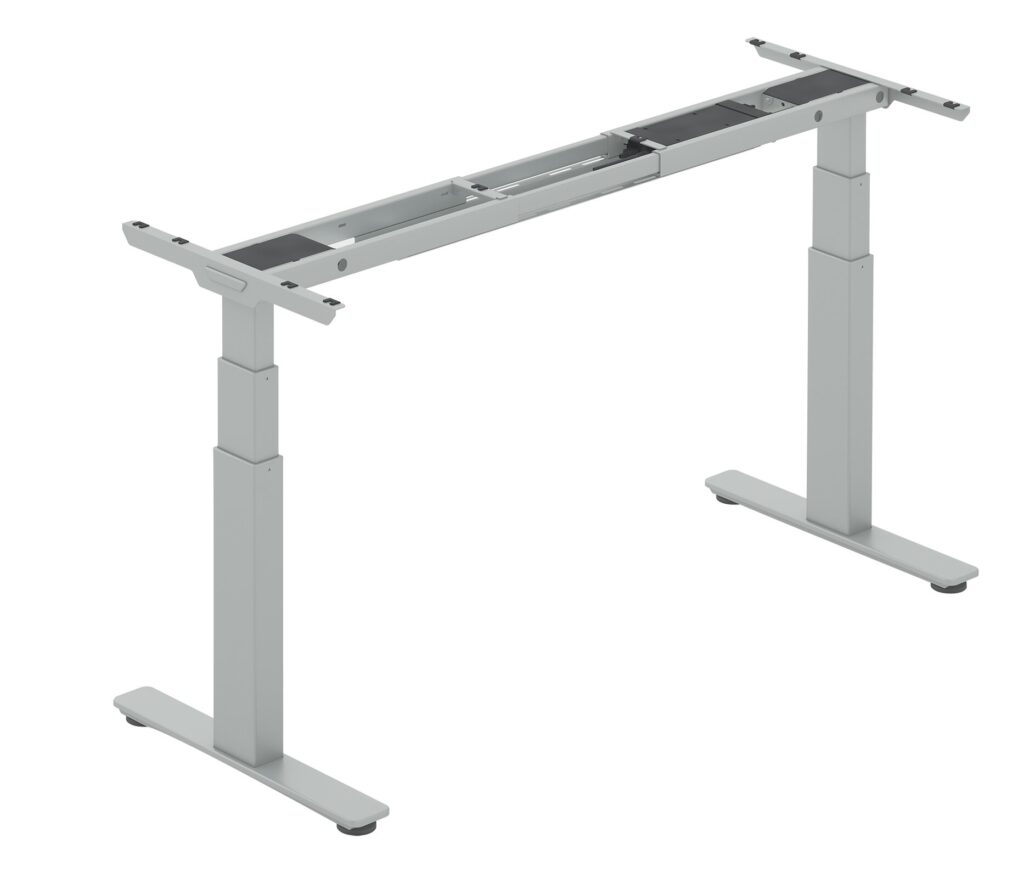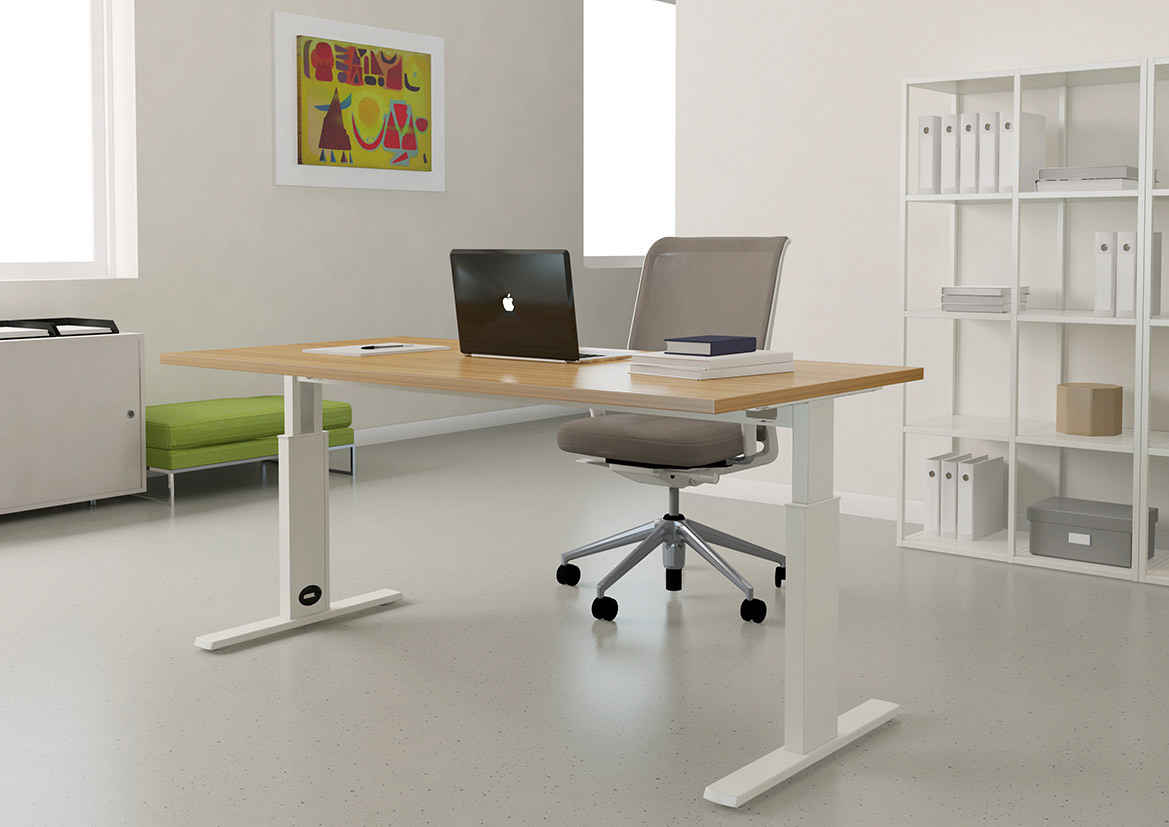The human body has evolved over millions of years primarily for movement. But in today’s fast-paced, technological age, we sit more often than ever before. And not just because of sedentary jobs, which more than a third of Czechs do. Sitting inappropriately at a desk can cause significant discomfort and, over time, health problems, especially back and shoulder pain. Current trends therefore bring functionality and variability to the office in addition to modern design. Height-adjustable desks are also becoming increasingly popular, making it possible to alternate between sitting and standing at work.

A poorly set table can cause health problems
Poor desk height often leads to poor posture and back and cervical spine problems. A desk that is too high forces us to lift our shoulders and puts strain on the neck and trapezius muscles. Conversely, if it is too low, our backs tend to hunch, leading to uneven muscle loading and increased pressure on the lumbar spine and discs. A hunched back also compresses the chest and limits its movement, which can result in reduced lung capacity.
Another unpleasant consequence of inappropriate desk height is stiffness or pain in the hands and wrists and, in the worst cases, carpal tunnel syndrome. And, probably needless to say, physical well-being also affects mental well-being and with it motivation and concentration. So if your employees are not comfortable at work, you can’t expect them to be 100% engaged.
Ideal workbench design
How an office desk should look like is described in detail in Government Regulation No. 361/2007 Coll., which sets out the conditions for occupational health protection. According to this regulation, the height of the desk should correspond to the height of the person who will use it. It is therefore advisable to choose tables whose height can be adjusted.
It is best to give employees the opportunity to change the position of the table and to alternate between sitting and standing work. The solution is, for example, Alupress design variable desks, which help to eliminate the problems caused by sitting for long periods of time while allowing the ideal height to be adjusted for all body types. Then it’s up to you whether you choose desks with manual or electric height control. Modern electrically operated tables also have built-in memory and can automatically adjust to stored positions.
You can tell the ideal height of the table for sitting and standing work by the angle of your arms. The elbows should be at approximately right angles, while the forearms must remain parallel to the floor. The knees and hips should be at right angles when sitting with the feet flat on the floor or resting on the footrest. Finally, look to see if the top of the monitor is at eye level or slightly lower, where it could put unnecessary strain on the cervical spine.
| User’s body height (cm) | Height of table when working sitting (cm) | Standing table height (cm) |
| 150–160 | 58–62 | 88–92 |
| 160–170 | 63–66 | 93–98 |
| 170–180 | 68–72 | 100–105 |
| 180–190 | 74–78 | 107–112 |
| 190–200 | 79–82 | 114–120 |
What else to consider when choosing workbenches
Table height is an important but far from the only criterion for setting optimal working conditions. For maximum comfort even when working all day, we recommend focusing on these parameters as well:
Stability
It is essential that the table remains solid and stable at any height and load. Poor quality tables can wobble, which does not add to comfort or safety. On the other hand, a sturdy, preferably steel, leg construction will ensure sufficient stability. However, it is not worth skimping on the height adjustment mechanism either, as lower quality versions will soon wear out and lose their strength and stability.
Carrying capacity
Before you get desks, also consider what you’ll have on them: computers, monitors, printers and other heavy equipment. A load capacity of at least 70kg is recommended for desks and, of course, with higher load capacities comes increased durability, which is particularly useful in shared workspaces. That’s why most Alupress Design desks boast a load capacity of 100 kg.
Work area
The work area should be sufficiently spacious, well lit and made of suitable materials. For offices, a desk size of at least 120 x 60 cm is recommended, but if you plan to use multiple monitors or large screens, choose a size of ideally 160 x 80 cm. Glossy and reflective boards may look fancy, but they will reflect light and dazzle employees. The most suitable material is wood or boards with a matt finish.

